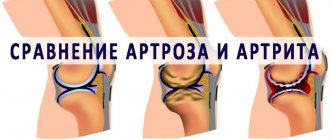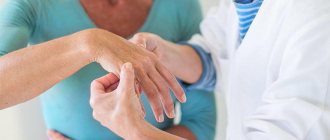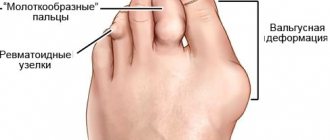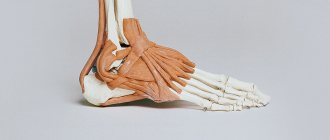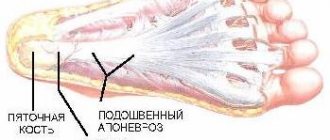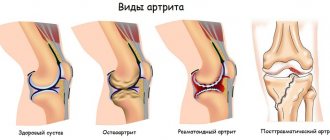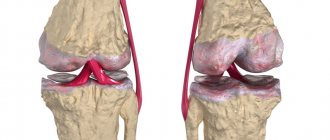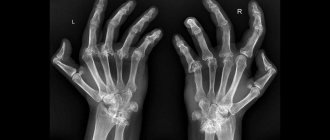- Arthritis and arthrosis - a fundamental difference
- How does arthritis and arthrosis manifest? Arthritis symptoms
- Symptoms of arthrosis
- Folk remedies for arthritis and arthrosis
| Joint diseases significantly affect the patient’s quality of life. Often, when a pathology occurs, we rush to draw our own conclusions. At the same time, it is also important to correctly understand the established diagnosis in the doctor’s office. There are two joint diseases: arthritis and arthrosis . Very often their meanings are confused. |
Let's tell you what each of them is? And how to overcome arthritis and arthrosis ?
Arthritis and arthrosis - a fundamental difference
These are two words with the same root meaning joint damage. Consonance in names often forces patients to get confused in the diagnosis or perceive the names of diseases as synonyms. This is not true.
Arthrosis is a joint deformity, most often age-related. Arthrosis develops to a greater extent in mature and elderly people. There are cases when arthrosis develops at a relatively young age, up to 40 years. Most often due to severe joint injury or fracture. More typical for people involved in professional sports.
Arthritis is a disease that is an inflammatory process in a joint. Despite the fact that the disease communicates itself by dysfunction of the joint, the disease affects the entire body. That is, if there is a tendency to inflammation, it can flare up in any joint or in several at the same time. The catalyst for inflammation is an immune failure, for example, due to the flu, hypothermia, or any stress (including emotional). The inflammation itself is caused either by an infectious agent, or dysfunction of the immune system (failure or overactive activity when its work is directed against the body itself), or a metabolic disorder.
The fundamental difference between arthritis and arthrosis is that arthrosis is a joint pathology, destruction and deformation of a joint, and arthritis certainly affects the functioning of internal organs. Arthritis most often affects the heart, kidneys and liver, and proper treatment will certainly prevent complications regarding these organs.
The situation is special with such diagnoses as juvenile and rheumatoid arthritis. These are autoimmune diseases that are extremely rarely completely cured. The consequence of progressive pathology is not only the destruction of the joint, but often also the adjacent area of the bone. Etiological factors include bacterial, viral or fungal infections of the joints. it usually penetrates them through the circulatory system. Certainly, a hereditary factor, an innate tendency of the body, is related to the development of rheumatoid and juvenile rheumatoid arthritis.
conclusions
Arthrosis and arthritis are a serious medical problem in many countries. The abundance of causes and risk factors contributes to their wide distribution in men and women. And if acute arthritis can be cured completely, then arthrosis and rheumatoid arthritis are chronic diseases that require constant attention and courses of anti-relapse therapy.
The effectiveness of methods used in the treatment of arthrosis and arthritis is not always high enough. Often patients undergo surgery - endoprosthetics (joint replacement). In other cases (rheumatoid arthritis), there is a need for heavy therapy with drugs that suppress the immune system.
UVT is a relatively new technique that has proven its effectiveness. Many researchers from different countries report its higher effectiveness in comparison with traditional methods of therapy. Patients note rapid pain relief, improved joint function and decreased stiffness. At the same time, the effect is more lasting, the percentage of relapses is lower, and there are no complications or side effects.
The technique does not require anesthesia, hospitalization or rehabilitation after its completion, and is economically available for implementation in outpatient settings.
How does arthritis and arthrosis manifest?
In order to notice the difference between arthritis and arthrosis, you can take a closer look at the symptoms of joint dysfunction. To stop the diagnosis, of course, a thorough set of procedures will be required. It should be noted that arthritis often leads to arthrosis, when, due to inflammation, the joint is modified and its functioning is disrupted. Similarly, with arthrosis, cases of inflammation in the joints are known. The difference is based on the underlying cause of the disease. If it is arthritis, then it occurs due to infection entering the joint. If this is arthrosis, then the deformation occurs due to injury, due to age-related changes, and inflammation is secondary or does not occur at all.
Despite the fact that arthritis and arthrosis often affect the same joints, there are still some differences in the localization and mechanisms of development of these diseases.
Arthritis symptoms
- basic
- severe pain in the joint(s), worsening at night;
- swelling and redness of the skin over the affected joint;
- night pain against the background of complete rest awakens a person;
- morning stiffness in the whole body and joints, which goes away within an hour, maximum by the afternoon;
- pain relieves with movement - a hallmark of arthritis;
- first of all, swelling and redness of the joints located at the base of the fingers (protruding bones of a clenched fist), if this was not preceded by injury;
- in 99% of cases, arthritis begins in the wrist joints;
- arthritis can also manifest itself as redness and swelling of the finger(s) along the entire length, the so-called “sausage-shaped deformity”;
- alternating swelling of the joints - for several days the inflammation is localized in one joint, then passes and develops in another; it is either articular rheumatism or gouty arthritis;
- attacks of severe pain in the joints of the big toes, in the knee joints or in the ankle joints - unbearable, accompanied by swelling and noticeable redness and, remarkably, ending suddenly after a few days or a week;
- the pronounced effectiveness of non-steroidal anti-inflammatory drugs - for arthritis, taking them relieves pain by 90-100%; for arthrosis, NSAIDs can be prescribed, but their effect will not exceed 50-60%;
- dense nodules under the skin in the elbow area the size of a pea against the background of inflammation of the joints - most often a consequence of rheumatoid arthritis or gouty tophi;
- low-grade fever - a combination of prolonged fever and inflammation of the joints is a sign of rheumatoid or reactive arthritis, ankylosing spondylitis or articular rheumatism;
- the parallel course of psoriasis or the presence of this disease in relatives increases the likelihood of developing psoriatic arthritis;
- in parallel with joint discomfort, a person loses weight and experiences a decrease in appetite;
- Reactive arthritis may be indicated by redness and blistering of the skin, “drenching sweat” or chills, dyspepsia, and even discharge from the genital tract, if all these symptoms are combined with joint pain.
Symptoms of arthrosis
- basic
- primarily localized in the knee and hip joints, the joint of the big toe;
- less commonly, ankle joints, and distal interphalangeal joints (close to the fingernails);
- pain syndrome is greater during movement than at rest;
- crunching in the joint (with the same movement);
- limitation of joint mobility;
- destruction of the joint affects its supply of blood and nutrients;
- deformation of the joint, which is also manifested in changes in appearance, direction of individual parts of the body, limbs;
- pain sensations are greater when moving the joint, they subside at rest;
- pain can also occur at night (as with arthritis), waking a person, but the nature of such pain is not in motionless sleep (as with arthritis), but in an attempt to get up at night or roll over to the other side;
- at the first stage of arthrosis, the pain is so subtle that a person does not attach any importance to it; at the second stage - it already causes noticeable discomfort and affects motor activity, and at the third - it occurs at rest;
- the use of non-steroidal anti-inflammatory drugs in the treatment of arthrosis is prescribed, but such drugs cannot completely calm arthrosis pain, they only weaken it;
- when moving in the affected joint, a rough crunching sound accompanied by pain is noted, the nature of which is the friction of the articular surfaces; progresses as the pathology worsens; it should not be confused with the harmless crunching of healthy joints (not accompanied by pain, due to weak ligaments or joint hypermobility);
- limitation of the range of motion in the affected joint is explained by a decrease in the joint space, the development of osteophytes, and the development of muscle spasms around the damaged joint;
- the same proliferation of osteophytes, as well as the accumulation of joint fluid here and modification of the bones articulating in the joint, is the cause of joint deformation; this may be accompanied by an inflammatory process, but visually inflammation and deformation are strikingly different.
What to do if your joints are bothering you?
Among doctors, the expression “pain is the body’s watchdog” is popular. Remember that pain in a joint or spine indicates ongoing damage - metabolic, inflammatory or dystrophy https://ehinaceya.ru/medicinskie-napravleniya/eskom. The disease can go away on its own, but at the same time, it can unexpectedly quickly lead to irreversible restructuring of the joint and even disability. Therefore, pain, and even more so limited mobility in the joint, is a serious reason for a visit to a rheumatologist.
Differential diagnosis of arthritis and arthrosis
The pathological condition of the joints certainly requires differential diagnosis. In addition to the fact that there are several types of arthritis and several stages of arthrosis, there are also other similar diseases - spondyloarthritis, synovitis, ankylosing spondylitis and much more.
Arthritis and arthrosis are differentiated from each other, and also compared with other diseases using the following diagnostic methods:
- clinical blood test,
- blood chemistry,
- blood test for rheumatic tests,
- x-ray of joints,
- X-ray of the sacroiliac joints,
- in some cases
- x-ray of the spine,
- radioisotope scan of the skeleton,
- CT scan,
- magnetic resonance imaging (CT or MRI).
Treatment strategies for treating arthritis and arthrosis
There are many approaches to the treatment of arthritis and arthrosis . To be fair, it should be noted that not every one of them ends in success. The very fact of developing arthritis or arthrosis in a patient means the likelihood of a relapse, a chronic predisposition, and therefore the doctor’s goal is rather to relieve the exacerbation and prevent a rapid relapse. To achieve this, several therapeutic tasks are implemented:
- relief of the inflammatory process - this is usually present in arthrosis, and even more so in arthritis; Non-steroidal anti-inflammatory drugs are particularly effective for arthritis, but anti-arthritis treatment strategies are usually included;
- relieving spasm from the muscles adjacent to the joint - this will ensure access of oxygen, nutrients and, of course, medicinal components to the cartilage;
- normalization of metabolism - possible only after eliminating the inflammatory process and providing an antispasmodic effect;
- removing salts from the joint during arthrosis is extremely important;
- normalization of the acid-base balance - a lasting treatment effect will be ensured only if the residual acids and salt deposits are regularly disposed of.
The key to success in the treatment of arthritis and arthrosis is to achieve a state where inflammation in the joint, muscle spasm is relieved and the acid-base balance is normalized, the joint begins to receive oxygen, nutrients and restore its mineral metabolism.
Folk remedies for arthritis and arthrosis
Treatment of joints with folk remedies is very popular. If only because such diseases are treated with traditional methods, but not easily. And folk remedies can be an excellent help, an addition to the prescription prescribed by the doctor. At the same time, hurry to discuss any chosen “grandmother’s recipe” with your doctor.
The following recipes help with arthritis:
- banana peel tincture - peel 5-6 bananas, pour ¾ liter of vodka, leave for two weeks in a dark place, then strain; use the tincture to rub sore joints;
- birch bud ointment - pour ½ kg of birch buds with a liter of vegetable oil, leave in a tightly closed glass container in a slightly heated oven for several hours; then pass the mixture through a sieve and add a pinch of camphor powder; use ointment to rub sore joints;
- bran bath - boil 1.5 kg of fresh bran in 3 liters of water for 10 minutes; pour the strained broth into a hot bath, adding sea salt if desired.
The following combinations of folk components are considered effective for arthrosis:
- elecampane tincture - 50 grams of dried elecampane, pour 125 ml of vodka, shake and leave to infuse in a dark place for 12 days or more, shake periodically; After the allotted time, strain and use for rubbing;
- horseradish compress - grate a few horseradish roots on a fine grater and steam in water over low heat, without bringing it to a boil; put the resulting slurry on a canvas cloth, after wetting it with the broth; apply such a compress to problem joints;
- bath of pine branches and Jerusalem artichoke – put several pine branches with pine needles and a couple of cut Jerusalem artichoke tubers into a hot bath, you can add a kilogram of sea salt and a couple of teaspoons of honey; This bath should be taken for no more than 20 minutes.
Nutrition for arthritis and arthrosis
Joint diseases - their prevention and treatment - require a special approach to the preparation of a diet. The course of arthritis affects the condition of the entire body, and arthrosis risks being irreversible, significantly affecting the patient’s quality of life. Therefore, the body must receive nutrients with a special bias. The influence of nutrition on metabolism, acid-base balance, etc. is taken into account.
General dietary recommendations to avoid the development or progression of arthritis and arthrosis are as follows:
- give up red meat,
- avoid foods containing a lot of fat, especially trans fats,
- give up alcohol,
- lean on fish and seafood,
- A special place in the diet should be occupied by vegetables and fruits in any form - raw, boiled, stewed,
- healthy dishes containing gelatin, based on cartilage - jellies, aspic, marmalade,
- plenty of drinking regime (at least 2 liters of water per day),
- dietary supplements containing vitamins A, D, group B and calcium.
General prevention of arthritis and arthrosis
Pay attention to general tips on how to prevent or aggravate joint diseases:
- avoid hypothermia, in particular of the legs, this is not only a path to exacerbation of chronic diseases and infection with viral infections, but also a factor that provokes joint syndromes;
- Avoid shoes with high toes or narrow, uncomfortable toes; casual shoes should be comfortable;
- control your weight - its violations signal a metabolic disorder, and arthritis is a partial consequence of it;
- moderate physical activity allows you to control weight, stimulate blood circulation, and strengthen muscles; if the diagnosis has already been established, then the load on the joint should be strictly controlled by a physician, but again no one will recommend lack of movement;
- adhere to a generally healthy lifestyle - nutrition, work-rest ratio, minimizing stress, giving up bad habits, etc.
Joint exercises for arthritis or arthrosis are a very important element of therapy. Therapeutic exercise along with massage of problem areas, as well as physiotherapy, are prescribed on an individual basis and must certainly be performed by the patient. This helps to provide the problem joint with nutrients and oxygen, without which its recovery cannot be expected.
What is useful and what is harmful for joint diseases?
Physical activity mode
Useful: exercises - “taffy”, increasing the elasticity and strength of muscles, measured walking, swimming, training on exercise machines (only with an instructor and without axial load on the joints and spine).
Harmful: running, jumping, tennis, jerking exercises, exercises “through pain”, lifting weights, standing for long periods of time.
Nutrition
Healthy: fresh vegetables, fruits, grain fiber (bran, whole grain).
Harmful: fat of animal origin, flour, smoked, spicy; for gout, limit the consumption of foods containing purines - meat, fish, beans and peas, dairy products, tomatoes.
